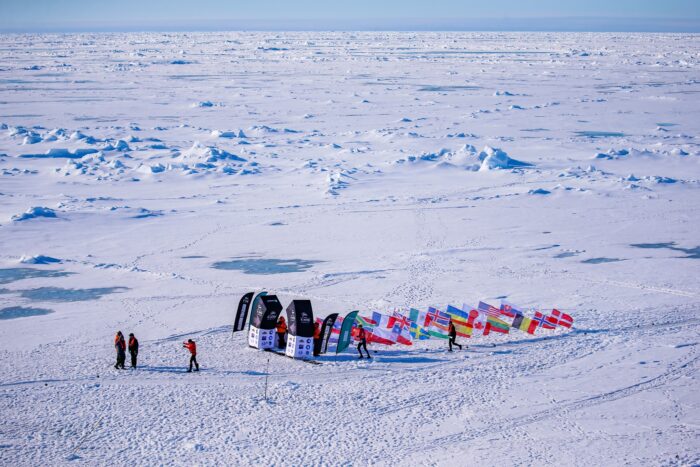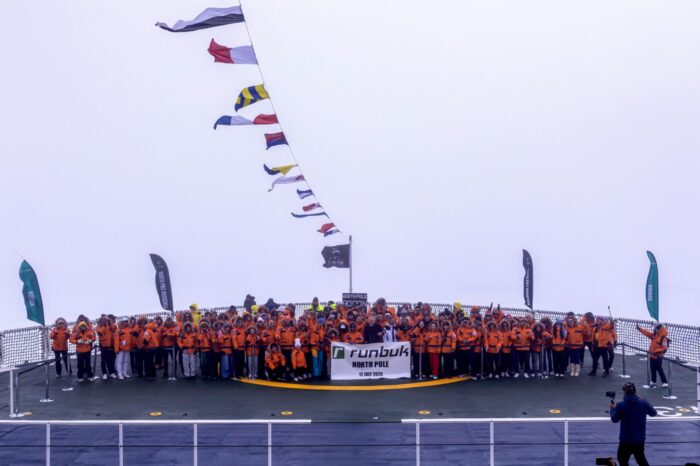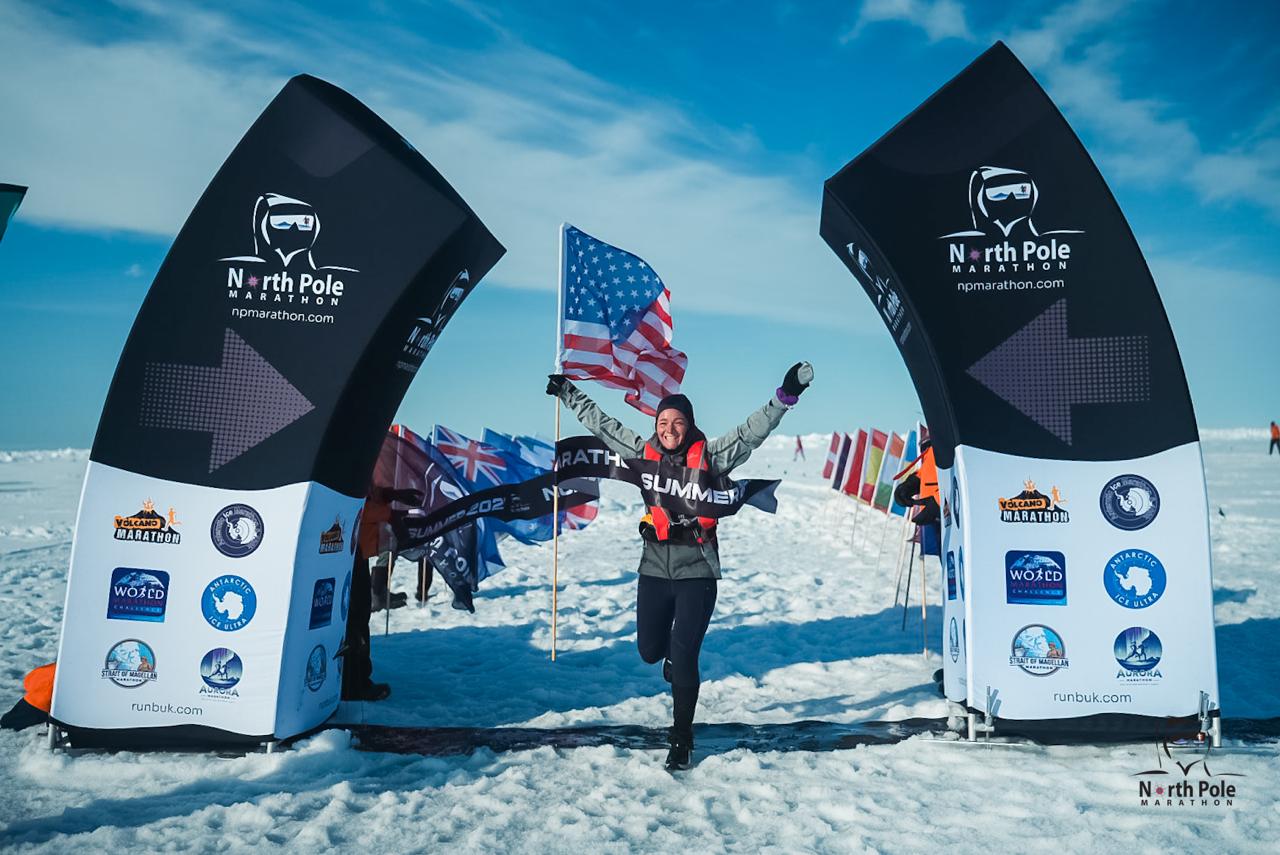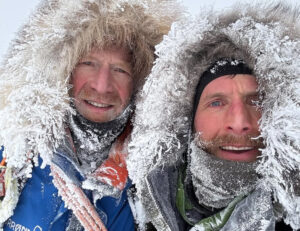A determined group of runners flew to 90˚ North earlier this month to take part in one of the globe’s most unique running events — the North Pole Marathon. This, despite the fact that the North Pole expedition season at Barneo, the floating ice station where the marathon traditionally takes place, was cancelled last spring for the seventh year in a row.
On July 13, 37 men and 24 women laced up for a full marathon on a marked course on the drifting ice of the Arctic Ocean. They were joined by 4 male and 10 female runners tackling the half-marathon distance, plus one hardy soul taking on a solo 50km route. The fastest time of the day belonged to Great Britain’s Oleg Polyntsev, who clocked in at 3 hours and 43 minutes.
In total, the athletes represented 21 countries: Poland, India, China, the United States, Belgium, Great Britain, Cuba, Mexico, Canada, Slovakia, Sweden, Denmark, South Africa, Lithuania, Australia, Chile, Iceland, Norway, the Netherlands, Ukraine, and Japan — bringing a global presence to the top of the world.
Origin of the race
The inaugural North Pole Marathon was held in 2003, with 18 more editions following, with all but two run in the spring. This was made possible by the logistical support of Camp Barneo, a temporary Russian-operated ice station drifting on the Arctic Ocean.
But since 2018, Barneo has been unable to operate, due to a mix of geopolitical tension, Russia’s war in Ukraine, and increasingly unpredictable sea ice. With the traditional route to the Pole shut down, the marathon’s organizers, Runbuk, were forced to reimagine the event.

Entrants at the start of this year’s Summer North Pole Marathon. Photo: npmarathon.com
That pivot arrived on August 16, 2023, when the Runbuk team organized the first Summer North Pole Marathon. Canadian ultrarunner Patrick Charlebois and American endurance athlete Melissa Kullander earned the distinction of being the first male and female finishers of the Summer event.

Despite the milder summer temperatures, the organizers found a large stable floe for the event. Photo: npmarathon.com
Runbuk also operates the Antarctic Ice Marathon at the bottom of the world. For those with the means and a thirst for polar travel, entry into these events doesn’t come cheaply. A spot in the North Pole Marathon will set you back $25,000, while its southern sibling comes in at $22,500. Still, that’s a bargain compared to the cost of a guided Last Degree expedition to either pole.
How do they get there?
For the spring version, runners used to fly via Svalbard to Barneo, situated around 89˚N. With that option out of the window, Runbuk tried last year to fly out of Krasnoyarsk, Russia, but permit issues ultimately thwarted that idea. So instead, they ran another summer edition of the event.
According to the event’s website, participants in the summer marathon travel by icebreaker on a 16-day journey. This begins with a flight from Paris to Longyearbyen, Svalbard. A polar icebreaker, Le Commandant Charcot, then sails north along Spitsbergen’s rugged coast, offering views of remote fiords and Arctic wildlife before continuing into the ice pack.

This year’s group of North Pole marathon runners on board ‘Le Commandant Charcot.’ Photo: npmarathon.com
Over the following days, the vessel navigates through shifting sea ice toward the North Pole. Weather and ice conditions permitting, the marathon takes place about a week after departure on a prepared course, with polar bear guards standing by.
Afterward, runners enjoy the celebrations, which include a polar plunge and an informal awards ceremony. The ship then makes its way south, retracing its path through the ice to Longyearbyen, from which participants fly back to Paris.
Though the golden era of North Pole sledding expeditions seems to have ended due to rising costs, limited logistics, and a warming climate, there remains a clear appetite to bring well-funded adventure tourists to the top of the planet for their brief moment in the Arctic sun.






